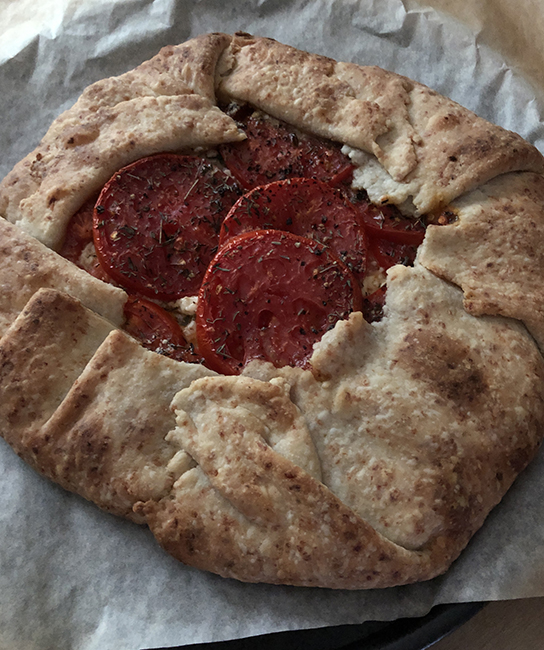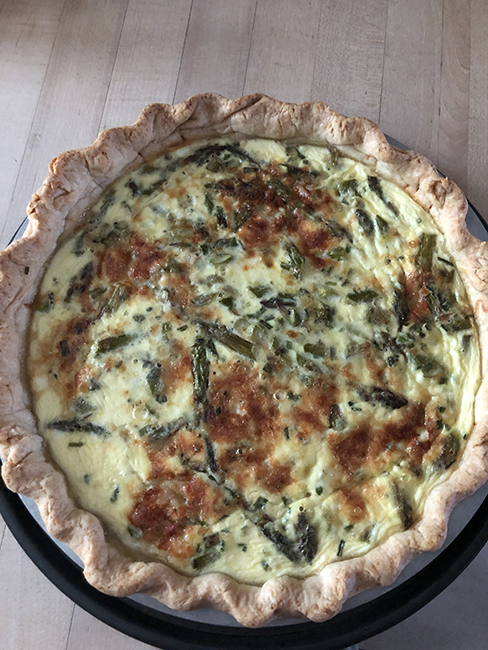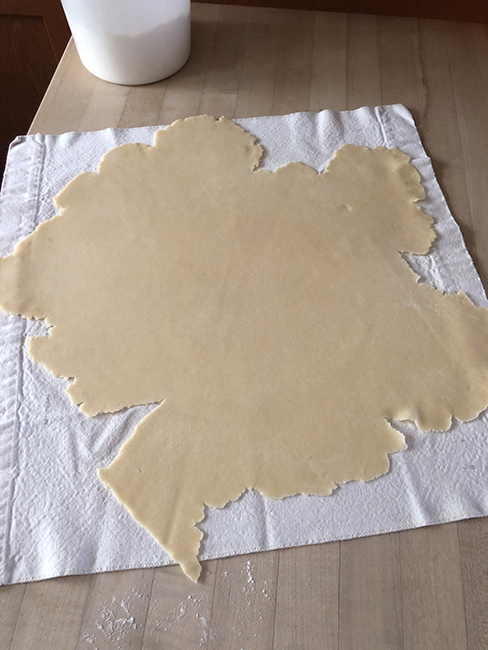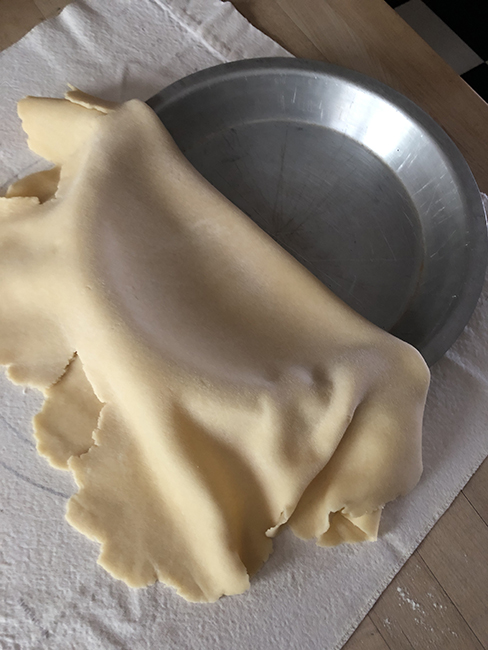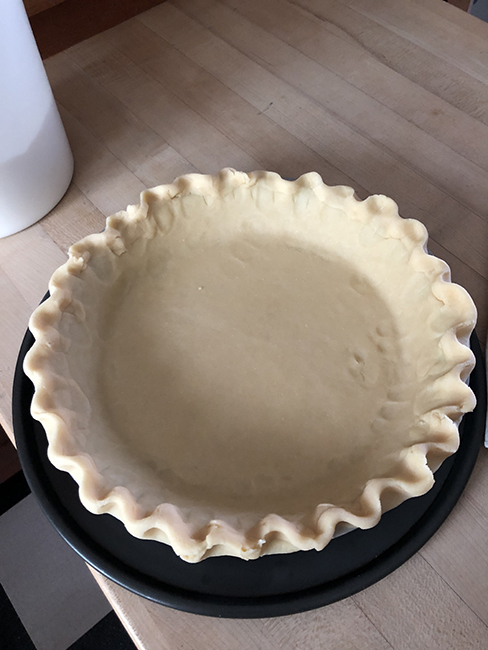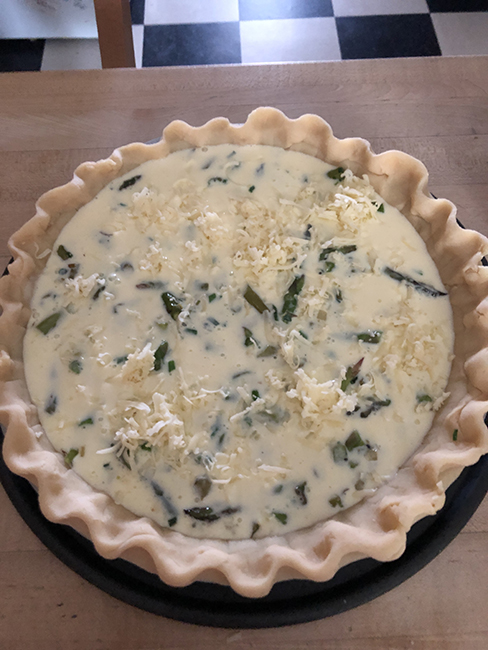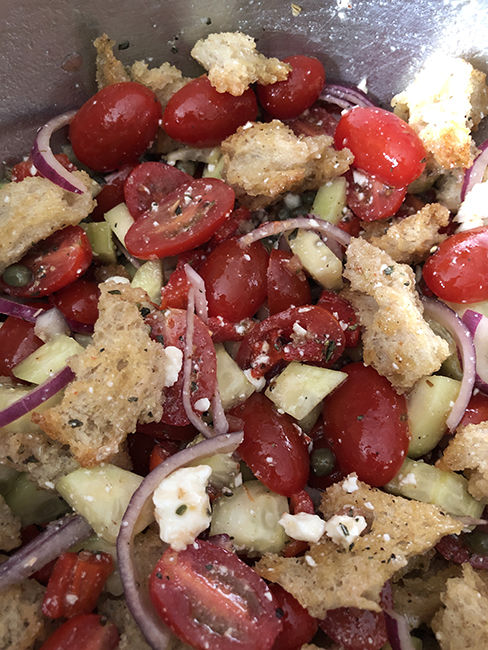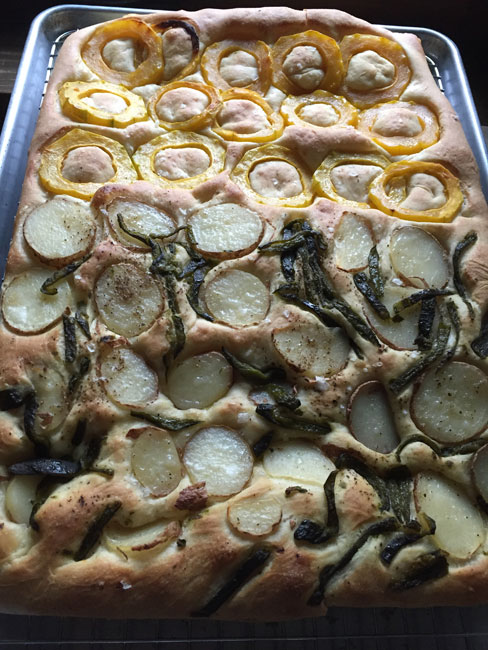
This galette combines greens cooked with garlic and coconut milk with roasted winter squash, and (optional) cheese. It’s impressive enough to be the vegetarian – or vegan – offering at your Thanksgiving, but easy enough for a weeknight, especially if you divide up the steps. You can roast the squash a few days before, make the crust, then simply assemble right before baking. You could even put the whole thing together and cover and refrigerate until you’re ready to bake.
Crust:
2 cups flour – proportions can vary; I used 1 1/2 cups unbleached white and 1/2 cup whole wheat
2 teaspoons sugar
a few pinches of salt (if you use unsalted butter)
9 tablespoons dairy or vegan butter
2 tablespoons vegetable shortening
7-8 tablespoons cold water
Filling:
1 small butternut squash (about 1 1/2 pounds), peeled, seeded and cut into slices
1-2 tablespoons of olive oil
1 bunch of greens, leaves only – I used Komatsuna greens; kale, collards or any sturdy greens will work; you’ll need about 3 cups of raw greens
1 tablespoon olive oil
1 large or 2 smaller cloves of garlic, minced or out through a press
1/2 a 14-oz. can of coconut milk
Salt & freshly ground pepper
Optional (to make it vegan) 1 1/2 to 2 cups grated cheese, your choice – I used Gouda, but any good melting cheese will work
Milk or water for brushing the crust when crimping
- Make the crust: measure the flour, salt and sugar into the bowl of your stand mixer (my favorite method), your food processor, or a mixing bowl. Slice the butter and shortening over the top and combine with the flour mixture, using the paddle attachment of the mixer, by pulsing the processor, or using a pastry blender, 2 knives or your fingers, until you have a crumbly mixture with no butter lumps bigger than currants. With the mixer or processor running, or while stirring with fork, drizzle in the water by tablespoons, until the mixture just starts to come together in clumps. Stop before you have one big ball. Turn the crust out onto a floured surface and knead lightly to bring it together. Gather it into a ball, flatten into a disk, wrap (in plastic, wax paper, one of your reusable snack/sandwich bags), and chill for about 30 minutes, and up to 2 days.
- Roast the squash: heat the oven to 375°. Line a baking sheet with parchment paper or lightly oil, then arrange the squash pieces on top and drizzle a little more oil over the top. Toss to make sure everything is coated, then roast for about 15-20 minutes until the squash gives when poked with a fork. Cool. If you are baking the galette now, you can leave the oven on.
- Cook the greens: heat a large pot of water, and when it’s boiling, add the greens and cook a few minutes until wilted. Drain the greens in a colander and run cold water over them to cool. When the greens are cooled enough to handle, squeeze out as much water as you can by taking handfuls and wringing them out as you would a sponge. Place the squeezed greens on a cutting board and chop. Heat 1 tablespoon of olive oil – you can use the same pot you boiled the greens in – and add the greens. Season with salt & pepper and toss to coat with oil. Add the garlic and continue to cook a few minutes until the garlic doesn’t smell raw. Add the coconut milk. If your coconut milk has separated into a large solid lump with liquid underneath, you might want to transfer the contents of the can into a bowl or spouted measuring cup to stir it back together. Otherwise try to get equal arts to coconut solids and liquid into the pot – the solids should melt pretty quickly over the heat. Stir to combine, bring to a boil, reduce heat and simmer until the thickened. When you run a spoon across the bottom of the pan you won’t see liquid under the greens. Cool.
- Assemble: Line a large baking sheet with parchment – I used a 14-inch deep pizza pan; a cookie sheet will work, too. On a floured surface, roll out the crust to a rouhgly 16-inch irregular square. Trim the crust to a 14-inch circle (you can put the trimmings on another baking sheet, sprinkle with cinnamon sugar, and bake for a treat). Fold the crust in half and place it on your baking sheet, and unfold. If using cheese, spread about 3/4 of it on the bottom of the crust, then top with the squash, then greens and sprinkle with the last of the cheese. Brush the edges with milk or water, and fold in, crimping every few inches.
- Bake at 375° for about 25 minutes until well browned. Serve warm or room temperature.


